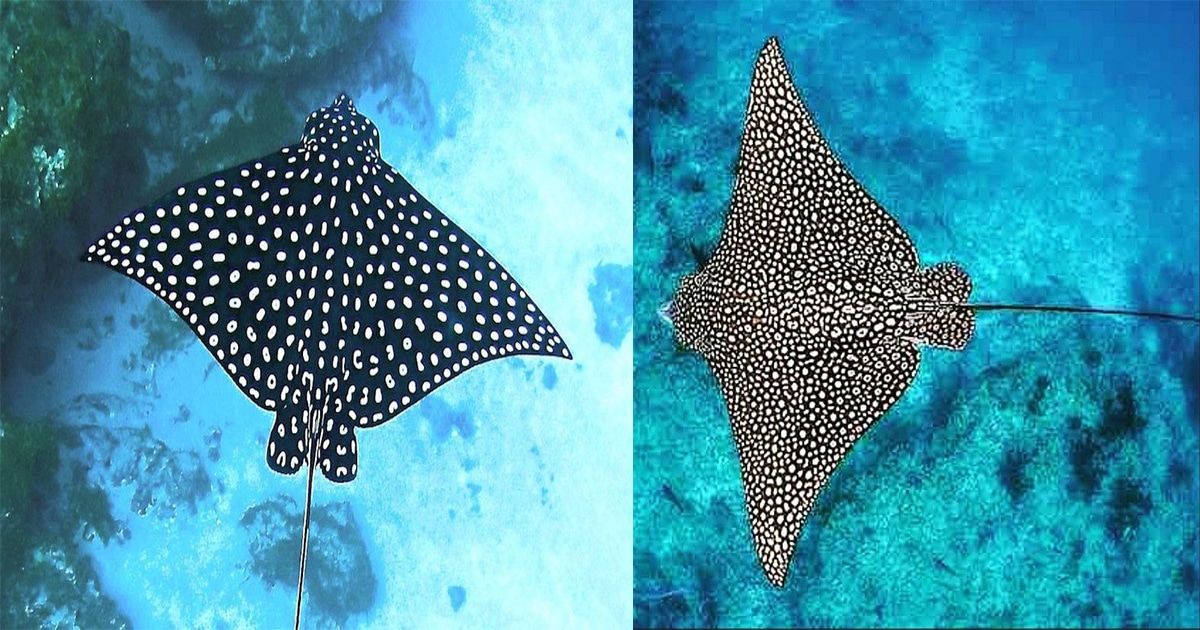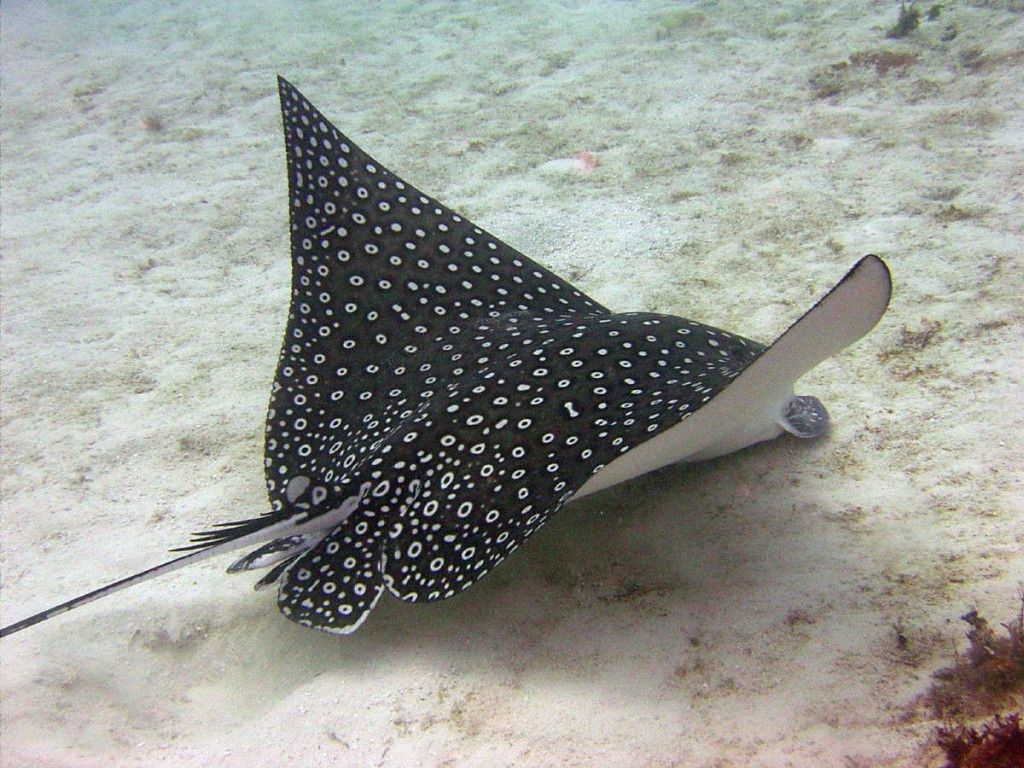
Under the shimmering waves of our oceans, a fascinating creature silently glides through the depths, captivating both scientists and marine enthusiasts alike. Known for its striking appearance and graceful movements, the spotted stingray (Dasyatis kuhlii) is a true enigmatic beauty that inhabits coastal waters across the globe. Let us embark on a journey to unravel the secrets and marvel at the wonders of this captivating species.
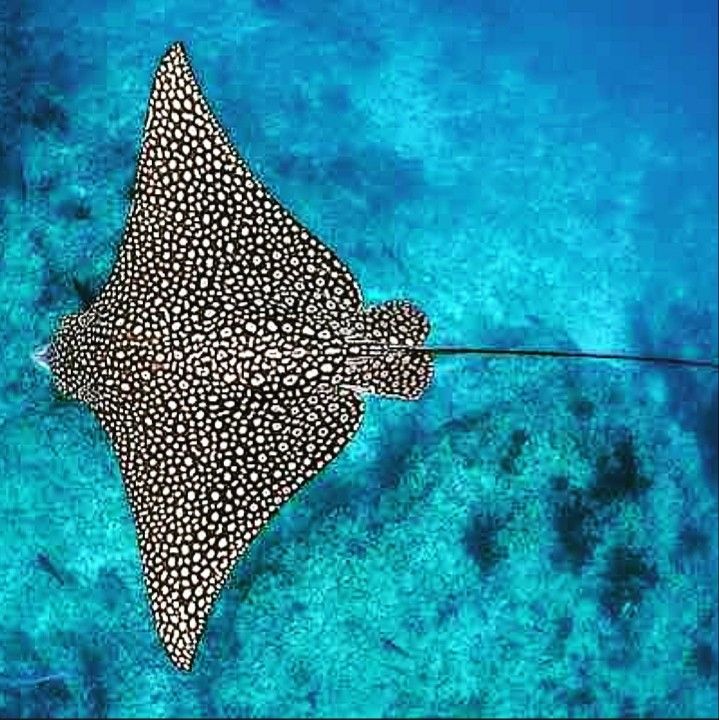
With its mesmerizing pattern of dark spots adorning its flattened body, the spotted stingray stands out among its relatives. It boasts a disc-like shape, extending up to five feet in width, making it a formidable presence in its underwater realm. These stunning markings, varying in color from dark brown to black, not only serve as a unique identifier for individuals but also offer excellent camouflage in the sandy or rocky seabeds where they reside.
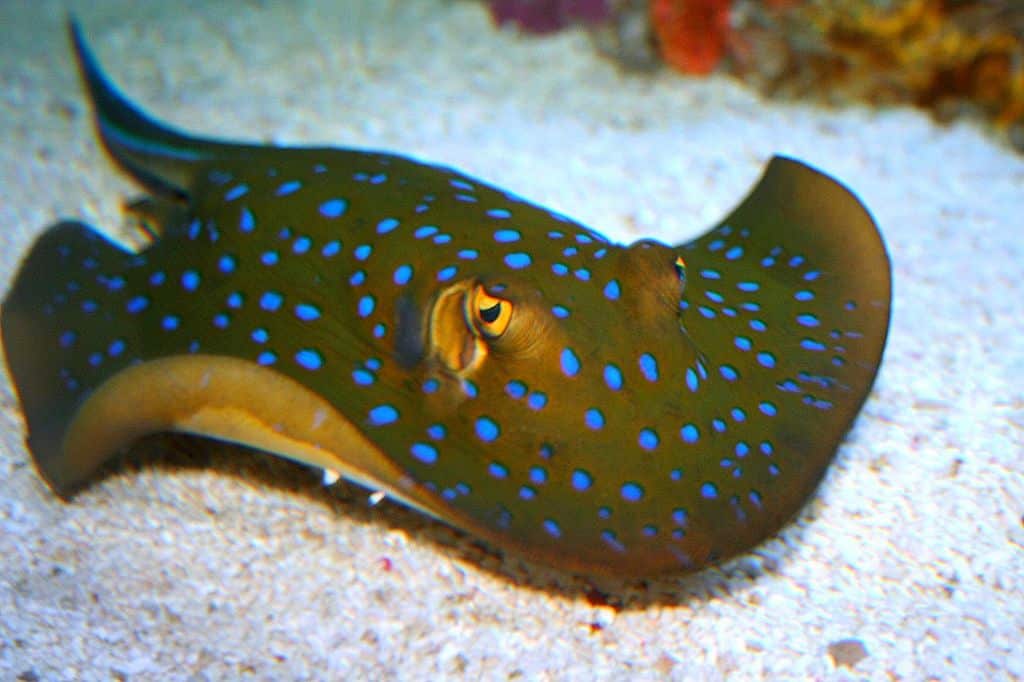
Found in tropical and subtropical waters, the spotted stingray is widely distributed across the Indo-Pacific region, including the Red Sea, the Indian Ocean, and the Western Pacific. It favors shallow coastal waters, lagoons, and coral reefs, where it gracefully glides through the currents, often burying itself in the sandy substrate to hide from predators or ambush unsuspecting prey.
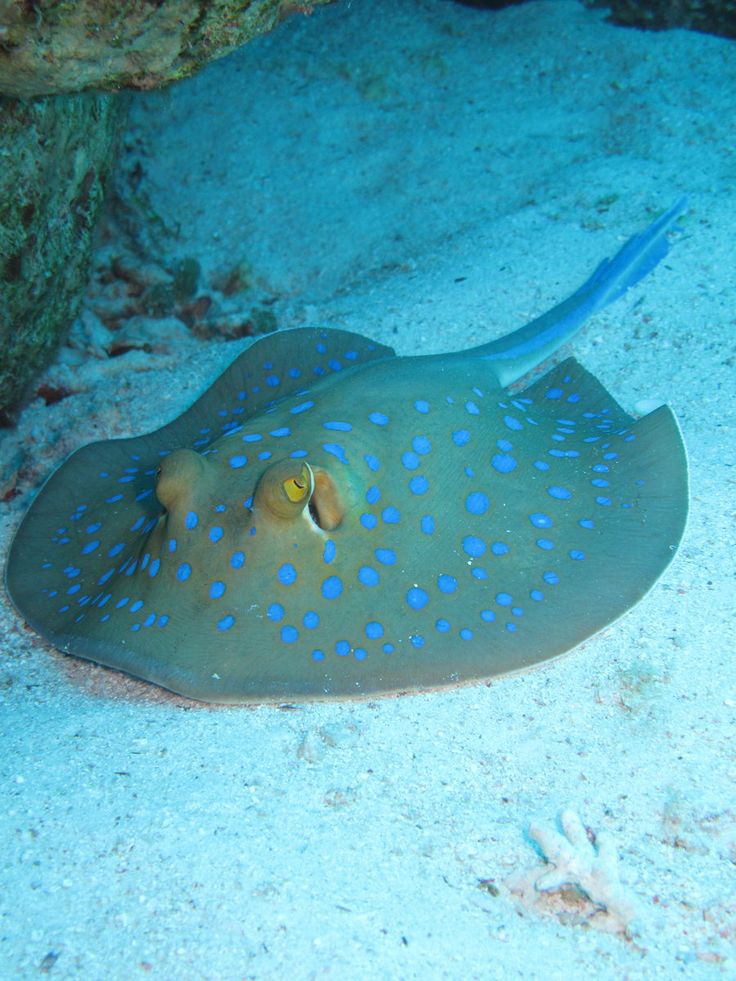
Despite its awe-inspiring appearance, the spotted stingray is a docile and generally non-aggressive species. It feeds primarily on a diet of small crustaceans, mollusks, and bony fish, which it skillfully hunts using its electroreceptive sensors located on the underside of its disc. These sensors, known as ampullae of Lorenzini, allow the stingray to detect electrical signals produced by its prey, making it a highly efficient hunter in its underwater domain.
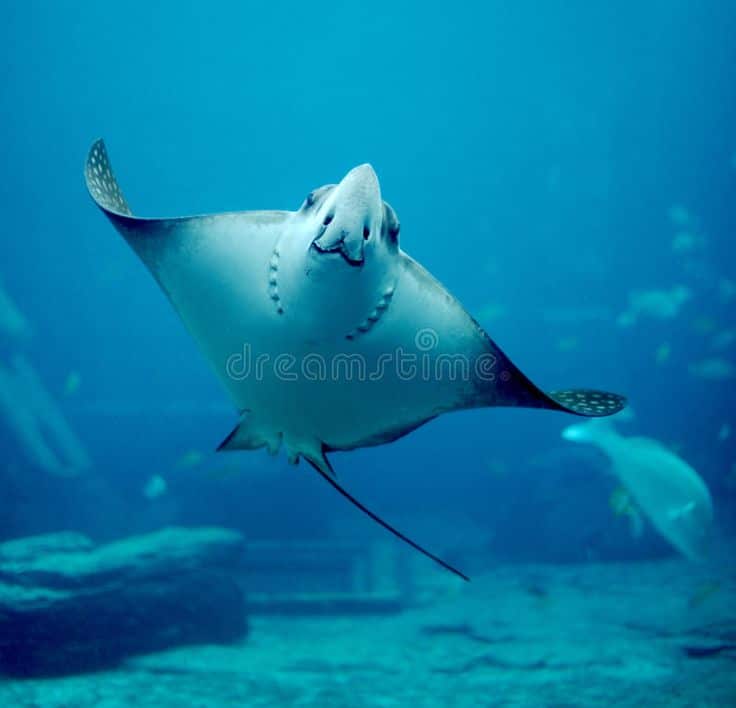
One of the most intriguing aspects of the spotted stingray is its reproductive behavior. Like other rays, it is ovoviviparous, meaning the embryos develop inside the mother’s body and hatch internally. After a gestation period of several months, the female gives birth to live young, usually ranging from two to six pups. These miniature replicas of their parents quickly venture off on their own, beginning their own journey in the vast ocean.
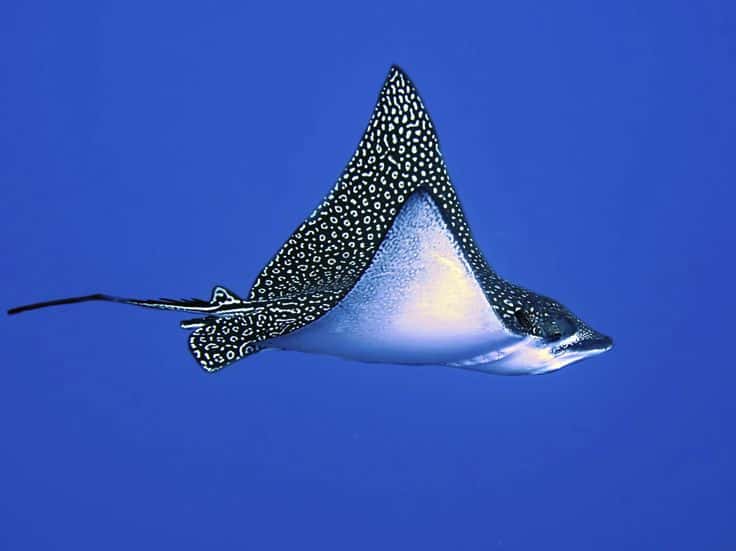
However, the enigmatic beauty of the spotted stingray is not without threats. As with many marine species, habitat degradation, pollution, and overfishing pose significant challenges to its survival. The destruction of coral reefs, which serve as essential nursery grounds and feeding areas, directly impacts the population of this majestic creature. Conservation efforts and sustainable fishing practices are crucial to ensure the preservation of this species and maintain the delicate balance of our marine ecosystems.
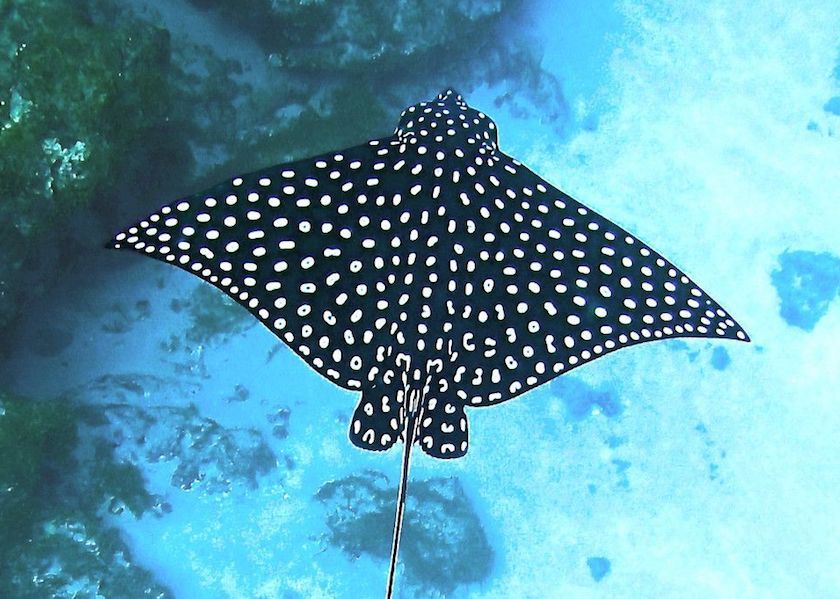
In conclusion, the spotted stingray represents the epitome of underwater elegance and adaptability. Its distinctive appearance, gentle demeanor, and unique behaviors make it a fascinating subject of study for marine biologists and a captivating sight for snorkelers and divers. As we continue to explore and appreciate the world beneath the waves, let us cherish and protect these enigmatic beauties, ensuring that future generations can also marvel at their presence in the vast blue expanse of our oceans.
